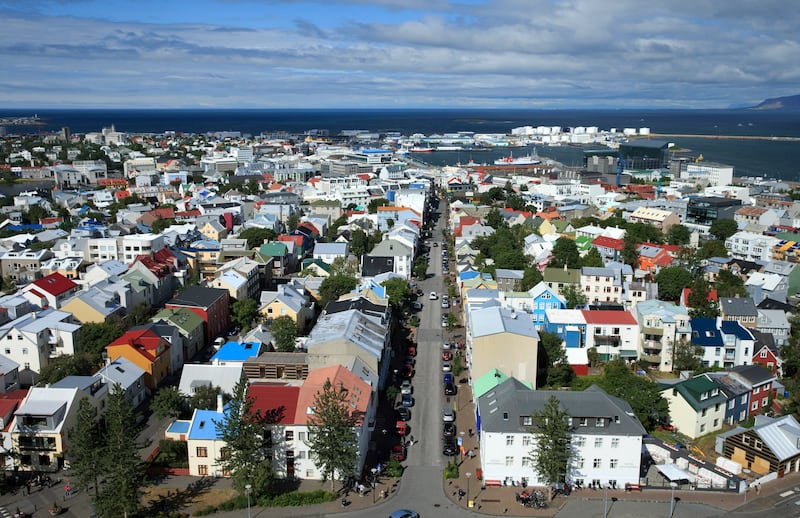Editor's note: The illicit drug trade is undergoing a seismic shift, with Utah in the middle of the deadly impact of opioids. You can read more about this modern-day plague on DeseretNews.com.
Iceland is known for its ice fields, its myths of elves and trolls and being one of the best places in the world to see the Northern Lights.
In the late 1990s, the capital of Reykjavik was also known as a place where downtown felt unsafe on Friday nights, according to a recent article in the Atlantic.
“There were hordes of teenagers getting in your face drunk,” American psychology professor Harvey Milkman told the magazine.
At the time, Iceland had one of the worst rates of teen substance abuse in Europe. “Say no to drugs” wasn’t working. And so the tiny Nordic country embarked on a radical experiment.
The program, eventually dubbed Youth Iceland, was based partly on the work of Milkman, a psychology professor at Metropolitan State College of Denver.
As an intern at Bellevue Psychiatric Hospital in New York in the 1970s, Milkman had been in what he called the “eye of the storm of the drug revolution.” His doctoral dissertation explored why some people turned to heroin while others chose amphetamines. He found that it often came down to how people preferred dealing with stress. Heroin users wanted to numb themselves. Amphetamine users wanted to “actively confront stress” through stimulation that distracted them.
Milkman’s work drew the attention of the U.S. National Institute on Drug Abuse, which was building a team of researchers to better understand addiction.
Milkman found that alienation, depression or even thrill seeking might lead someone to try drugs or alcohol. But why did some continue using and others didn’t? Milkman says this question led to an “aha moment.” Those most likely to develop a reliance on drugs or alcohol might be at risk before they even took the drug because of how they coped with stress.
“They could be on the threshold for abuse before they even took the drug, because it was their style of coping they were abusing,” Milkman recently told the Atlantic.
In other words, those who liked to “actively confront” stress were often seeking a rush, which they might find committing petty crimes like shoplifting, or through taking stimulants. Others were drawn to sedatives, like alcohol, to reduce anxiety.
What if he could give teenagers a “natural high” instead, and they became hooked on this feeling?
In 1992, Milkman and a team of researchers won a $1.2 million grant to form something called Project Self Discovery. The program targeted kids 14 and up who weren’t in need of treatment but had started getting into trouble. Project Self Discovery was built around the idea of letting kids pick what they wanted to learn — it could be martial arts, dancing or boxing. They also included a life skills class that helped kids change the way they saw themselves and how they interacted with others.
Milkman’s work caught the attention of a young researcher at the University of Iceland in the mid-’90s. She wondered if they could use the program not just for kids with substance abuse problems, but also for kids who had never begun using.
At the time, Iceland’s rate of teen substance abuse was dismal: over 40 percent of teens between the age of 13 and 16 reported on a national survey that they had been drunk in the last month. Twenty-five percent reported smoking, and 17 percent reported using marijuana. The survey also wanted to uncover contributing factors to substance abuse.
A handful of factors emerged as barriers to drug use, and some were surprising: spending significant time with parents during the week made a big difference, as did participating in organized activities (especially sports) three to four times a week, and feeling of being cared about at school.
Built on this research, Iceland created its Youth Iceland program, which may be the most ambitious anti-drug campaign to date.
Youth Iceland encouraged parents to attend talks on the importance of spending quantity — rather than just quality — time with their children during the week. The researchers also suggested parents keep their kids home at night.
The government pumped millions of dollars into new programs for sports, music, arts and dance. Kids needed to feel like they were part of something. And they needed to find the “natural high” Milkman had identified as a more surefire way to prevent substance abuse than “Just Say No” programs. Low-income families — who previously couldn’t afford signing their kids up for sports leagues or art classes — were given a “leisure card” of $325 a year to participate in recreational activities with their children.
The government also implemented a nationwide curfew: kids between the ages of 13 and 16 couldn’t be outside after 10 p.m. in the winter or after midnight in the summer.
Today, Iceland has the lowest rate of teen substance abuse in Europe. In 1998, before Youth Iceland, 42 percent of 15- and 16-year-olds reported getting drunk in the last month. Last year, that number had dropped to 5 percent. Those smoking cigarettes dropped from 23 percent to 3 percent.
At the same time, the percentage of those spending time with their parents on weekdays doubled, from 23 percent to 46 percent, and the percentage participating in organized sports at least four days a week jumped from 24 percent to 42 percent.


